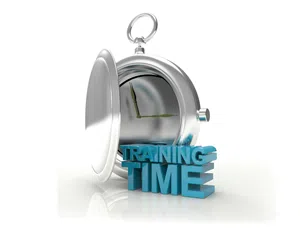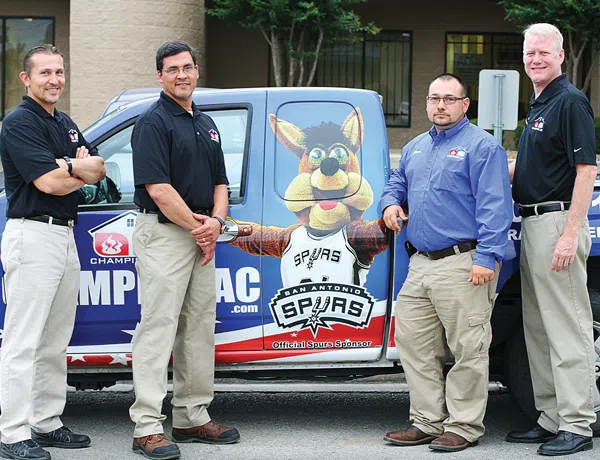Know when your in-house training is working, and when it's time to seek outside help.
In this industry, we not only want to hire good people, we also want to continually train those people to be the best. We meet with our employees, impart knowledge from our own experience in the field and hope it's understood and then used by our team.
But how do we know that our training is really working? If we seem to be doing training right and nothing is changing, then how do we know when to bring in outside help?
First, to scrutinize whether your training is effective, you need to look at whether your training is moving your business metrics in the direction you want them to. If you don't know what metrics you should be training against, then you need to identify these (it could be anything from conversion rate to average ticket).
Decide the metrics, train, then measure the metrics again. This is the only way to know definitively that your training is working. If you're doing this, and the metrics aren't getting better, then it's time to take a look at the training itself.
Potential Problems and How to Fix Them
Before you look to outside training help, look at your own training. Some training issues are relatively quick and easy to fix. Here are a few common problems in-house trainers make and simple solutions to fix them.
You might be: Blending housekeeping and training. By combining your company reminders or announcements with your training meetings, you're diluting your training message. Sometimes, company reminders are negative & as in, "Your trucks are looking really dirty and you all need to do a better job of cleanup." This creates a mixed message and a negative state of mind.
Do you think your technicians are going to be receptive to new information in this state? No. Even positive news can be enough competing information to throw off how much new information your team will absorb.
Instead: Avoid this blend of messages by holding two separate meetings. If you must combine the two meetings, take a clear break between the housekeeping portion and the training portion.
Better yet, don't hold a housekeeping meeting at all & use technology. Send an email or text message about truck cleanliness, time cards or other housekeeping notices. Let the technology save you time. Or, address each person specifically in one-on-one meetings.
You might be: Failing to respect primacy and recency. The most important real estate in a meeting is the first and the last thing said.
Think about your own training. Are you opening and closing with a deliberate choice? "Good morning everyone, how are you doing" is not a good enough opener; while it may be standard, it's boring and unmemorable.
Instead: Choose the first sentence you will say ahead of time & and say it. Pick something valuable: "Last week, we hit an all-time high conversion rate" or "Three customers commented on how good our crew was at clean up." Now you've got their attention.
At the end of the meeting, send them back to the information that was most important to them. This is a great retention tactic. Have them consider the information you went over in the session, choose one or two points, share with a partner and explain the importance and what they're going to do with that information.
You might be: Failing to respect time. Perhaps you start the meeting a few minutes late while the stragglers wander in. Maybe you let the meeting run late as you wax eloquent.
Failure to respect time sends a clear message to your team, and it is the exact opposite message you tell them about respecting your customers' time.
Instead: Set an amount of time for a meeting and stick to it. In general, a good amount of time for a training meeting is 30 minutes, weekly. If you're stretching into an hour, split the meeting in half and have a short break between the two sections.
If your team members habitually show up late for meetings, consider locking the door at the stated start time until the meeting is over. It sets a tone of respect for everyone's time, not only yours but the other employees who were punctual.
Furthermore, if you're running out of time but you're not done with your meeting agenda, end it anyway and do it promptly. Next week will be another meeting. And then another. And another. Consider the powerful message you send when you announce, "Folks, we're out of time. We'll pick up on this next week."
You may do all of these things and still not see the results you want from your training. That's because even the best weekly training programs need some outside help.
When to Bring in Help
 Sometimes your team needs to hear the same information you've been telling them come from someone else's mouth. It's a concept as old as humanity, so old even the Bible states, "A prophet is honored everywhere except in his own town."
Sometimes your team needs to hear the same information you've been telling them come from someone else's mouth. It's a concept as old as humanity, so old even the Bible states, "A prophet is honored everywhere except in his own town."
A Nexstar member trainer once told me about his own training: Even though he is consistently rated highly among other members and has technicians around the country hanging on his every word at Nexstar trainings, technicians in his own shop think he's boring and want the other guy to train.
Even if you're doing a really good job of training, one of the reasons you may not be seeing the results you want could be familiarity. Recognize that a failure in getting information through to your team is not necessarily a failure of your training skill.
There is something extremely powerful about third party validation; no matter how good you are, you'll need outside help.
The best way to integrate your weekly training program with an outside trainer is to structure the in-house training so it reinforces the outside training. For example, you'll spend time for three weeks prior to outside training discussing conversion, have your team go through the outside training and then reinforce the concepts for the six weeks following.
The bottom line is that for the best results, you need to have a mix of in-house and outside training. Outside training is not the silver bullet for getting your team in top shape. Without ongoing support, the effects of outside training will wane inside of two weeks.
At this point, you may be wondering how often you should be bringing in an outside trainer or sending your staff away to classes. This varies a lot according to company size, your staff and many other factors, and there is no one way to go about it.
Some of the bigger companies ($20-40 million) bring in outside training multiple times a year. Mid-size companies ($5-10 million) bring in training at least once a year, sometimes twice. Companies smaller than $5 million often partner up with other nearby companies to fill a class, or send their folks to public events.
The minimum recommended exposure for outside training, per technician, is once per year. Twice is better.
You don't need to find the next hottest training fad, or draw from multiple sources. You'll only confuse your team, not help them. Pick a program, train it, reinforce it, and train it again. Rinse, and repeat. The companies that do the training multiple times per year are using the exact same program every time. Some even prefer to use the same person.
In the world of training, there is no one-and-done solution. It takes multiple exposures to fully absorb and integrate the vast volume of information shared in a three-day program. I recently had a technician come up to me at a private training event and tell me, "This is my fifth time through the training, and I still learned so much. I had no idea there was more for me to learn."
If the only contact you have with your employees is in group training, they may be lacking in accountability. This issue will directly interfere with the success of your training sessions.
Accountability grows out of weekly one-on-one meetings with a manager. That meeting is about giving your employees a voice, and it's a space where accountability and action are expected and reinforced weekly. These meetings need only be 15 minutes long, and everyone in your company needs them, every week.
Keep training in-house. Get support from an outside trainer, either in your shop or offsite. Hold weekly one-on-one meetings. Watch your business results consistently improve.
 Dan Friesen is one of Nexstar's full-time master trainers. He is a world-class trainer and contributor to Nexstar since 2004. To learn more call 888-251-9188 or visit nexstarnetwork.com.
Dan Friesen is one of Nexstar's full-time master trainers. He is a world-class trainer and contributor to Nexstar since 2004. To learn more call 888-251-9188 or visit nexstarnetwork.com.


 Sometimes your team needs to hear the same information you've been telling them come from someone else's mouth. It's a concept as old as humanity, so old even the Bible states, "A prophet is honored everywhere except in his own town."
Sometimes your team needs to hear the same information you've been telling them come from someone else's mouth. It's a concept as old as humanity, so old even the Bible states, "A prophet is honored everywhere except in his own town."  Dan Friesen is one of Nexstar's full-time master trainers. He is a world-class trainer and contributor to Nexstar since 2004. To learn more call 888-251-9188 or visit
Dan Friesen is one of Nexstar's full-time master trainers. He is a world-class trainer and contributor to Nexstar since 2004. To learn more call 888-251-9188 or visit 


